.
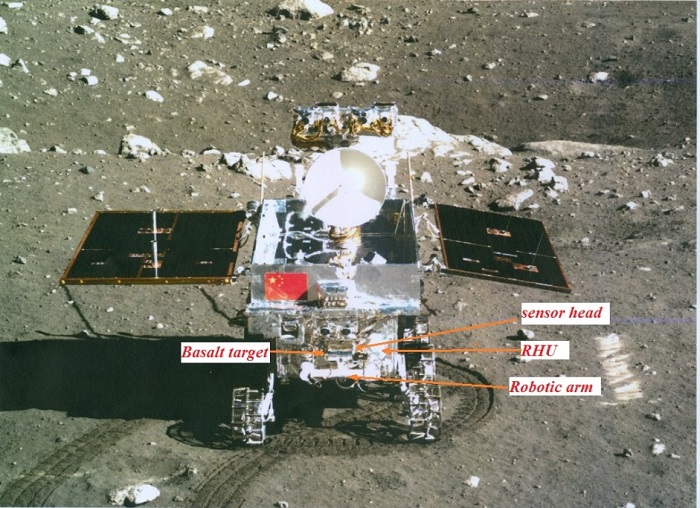
Figure2 APXS on Yutu rover of Chang’e-3 mission (image by Xinhua)
.
Chang'e-3 satellite payload APXS obtained its first spectrum of lunar regolith
The Active Particle-induced X-ray Spectrometer (APXS), carried by the Yutu rover of the Chang’e-3 satellite got its first X-ray fluorescence spectrum of lunar regolith around the landing site on December 25, 2013.
An initial analysis indicates that eight major rock-forming elements (Mg, Al, Si, K, Ca, Ti, Cr and Fe) and at least 3 minor elements (Sr, Y and Zr) of the Moon can be identified in this spectrum. Besides, the energy resolution of AXS is estimated to be about 135 @5.9keV, which demonstrates that it is currently one of the best X-ray spectrometer for the planetary exploration in the world.
APXS was firstly powered on December 23 and an in-flight calibration of a standard basalt rock sample mounted on the rover was accomplished in five minutes, which proved its stable performance on the Moon. Two days later, APXS was successfully deployed to about two to three centimeters above the lunar regolith surface by the robotic arm of Yutu and started the detection mode. APXS was not only an X-ray spectrometer, but also served as a distance sensor during the deployment by making use of X-ray count rate varied with distance.
The Institute of High Energy Physics (IHEP) developed APXS in collaboration with the Purple Mountain Observatory (PMO), CAS. Prior to the APXS on Chang’e-3, two X-ray Spectrometers onboard Chang’e-1 and Chang’e-2 developed by IHEP scientists were launched respectively on October, 2007 and October, 2010.
.
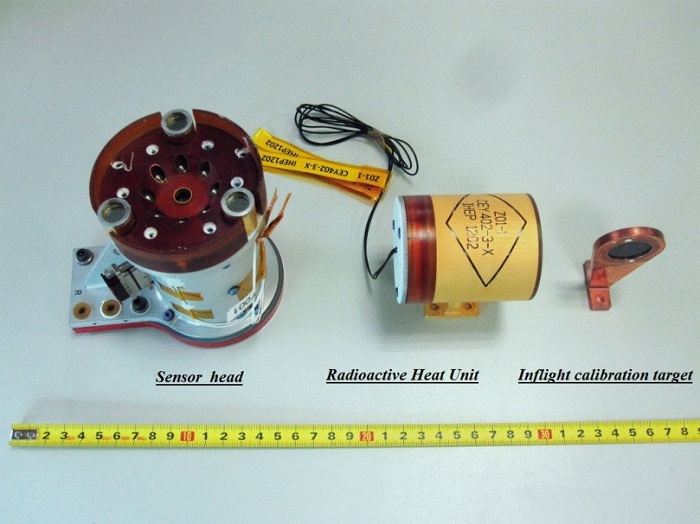
Figure 1 APXS (Sensor head, Radioactive Heat Unit and Inflight calibration target),image by IHEP
.
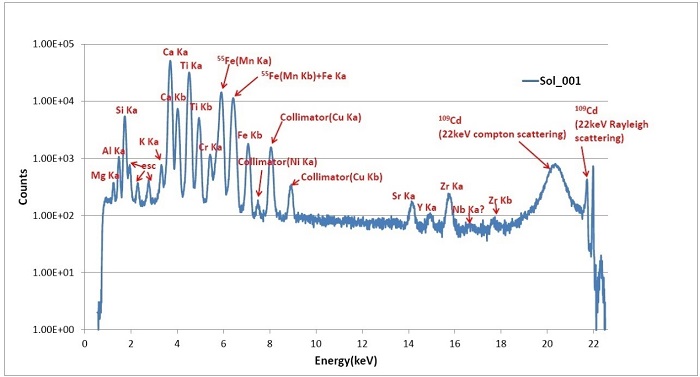
Figure 3 First X-ray fluorescent spectrum of lunar regolith obtained by APXS (image by IHEP)
.
Quelle: Institute of High Energy Physics, CAS
.
Update: 4.01.2014
.
China moon rover stamps and medallions celebrate country's first lunar
landing
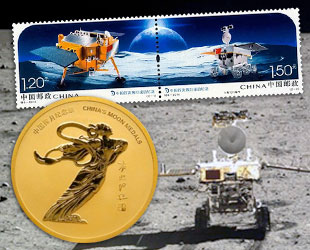
.

Quelle: SC
.
Update: 12.01.2014
.
Moon rover, lander wake after lunar night
.
BEIJING, China's moon rover "Yutu" (Jade Rabbit) and the Chang'e-3 lander have just "woken up" after a period of dormancy that lasted two weeks, or one lunar night, in a move designed to ride out harsh climactic conditions.
Yutu was awakened autonomously at 5:09 a.m. Beijing Time on Saturday and has finished necessary setting procedures and entered a normal working mode following orders from the Beijing Aerospace Control Center (BACC), according to a statement issued by the BACC on Sunday.
It has started its rove around the moon surface and scientific missions.
Chang'e-3 has also been awakened automatically at 8:21 a.m. on Sunday, and is currently in normal condition, the statement said.
One night on the moon lasts about 14 days on Earth, during which the temperature falls below minus 180 celsius and there is no sunlight to provide power to the instruments' solar panels.
"During the lunar night, the lander and the rover were in a power-off condition and the communication with Earth was also cut off," said Zhou Jianliang, chief engineer of the BACC.
"When the night ends, they will be started up with the power provided by sunlight and resume operation and communication according to preset programs," Zhou said.
The awakening of the rover and lander marks the success of Chinese technology in surviving the lunar night, and the center will instruct the two instruments to carry on scheduled exploration missions, the chief engineer added.
Chang'e-3 soft-landed on the moon's Sinus Iridium, or the Bay of Rainbows, on Dec. 14 last year, and Yutu later separated from the lander.
The rover fell asleep on Dec. 26 as the mission's first lunar night arrived.
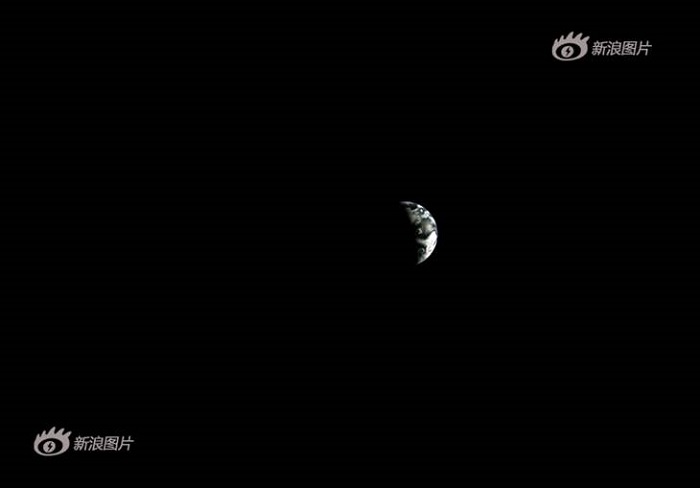
The Chang'e 3 lander captures a picture of Earth surrounded by the blackness of space on Dec. 25.
Quelle: Xinhua
.
Update: 15.01.2014
.
.
Update: 17.01.2014
.
China's Jade Rabbit rover explores Moon soil
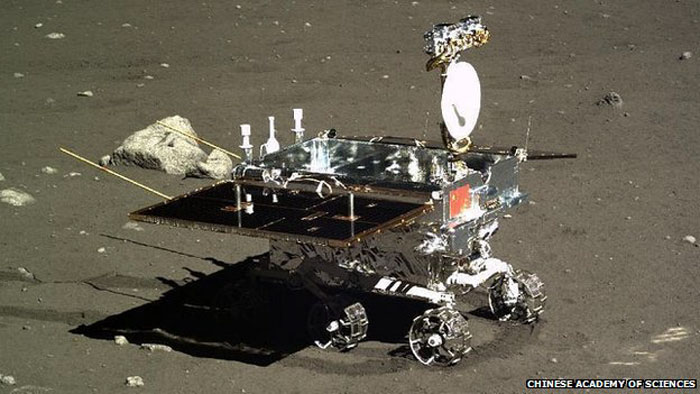
Moon lander Chang'e-3 and rover "Yutu" of China's lunar probe mission have collected a large amount space observation and moon exploration data, a government authority said on Friday.
A moon-based optical telescope on the lander has been observing lights from many celestial objects at near ultraviolet wavelengths, and has detected 23 stars, said a statement from the State Administration of Science, Technology and Industry for National Defence.
After data analysis and processing, scientists have drafted an atlas of stars around the constellation Draco, the statement said.
Probe equipment on the rover Yutu (Jade Rabbit) is exploring the moon.
The probe radar has surveyed the moon's surface and collected two sets of data about the structure of lunar soil beneath the surface within 140 meters and 10 meters respectively, the statement said.
The panoramic camera and infrared spectrograph have sent back clear images of the moon's surface and data collected by a particle X-ray device has helped scientists identify 11 types of chemical elements such as magnesium, aluminum, calcium and yttrium on the moon, it added.
Data collected from observations of the plasmasphere over the Earth will provide more information about the impact of solar activities to the Earth, according to the statement.
These findings will provide information for scientists to better understand the terrain, geological structure, material composition and soil formation of the moon, the statement said.
.
The Chang'e-3 lunar probe has started its long-term scientific missions and will have its durability tested when it continues lunar surface surveys, sources with the Beijing Aerospace Control Center said on Thursday.The center transferred operations of the probe to a smaller management team on Wednesday night, said Cui Yan, who leads the team at the center.
"We have made all the hardware and software ready for the long-term control tasks and have developed new management methods," Cui said, noting this is the first time China would operate a lunar probe for as long as one year.
Liu Junqi, one of the chief engineers on Cui's team, said that during the yearlong task the team will coordinate deep-space control stations around the nation to closely monitor the Chang'e-3 lander and the Yutu rover, and to arrange scientific missions on the lunar surface.
One of the major responsibilities for the team is to put the lander and rover into sleep mode when the lunar night falls and "awaken them" once the night ends, he said.
One night on the moon lasts about 14 Earth days, during which the temperature falls below minus 180 C and there is no sunlight to provide power for the instruments' solar panels.
"The transfer of control marks the successful completion of the probe's first stage of exploration and scientific missions," said a publicity officer at Beijing Aerospace Control Center who refused to be named.
He said under the long-term management mode, the lander and rover do not need a lot of people to take care of them, therefore Cui's team, which has less than 20 people, is able to take over from the current large control group.
"Next, the team will control the probe to perform scientific operations that can last several months. Engineers will test whether the lander and rover can function well over a long period and whether they can live up to their designed life span," the officer added. "During the yearlong period, the team's controllers and engineers will work about 15 consecutive night shifts each month, so this is really a tough job."
The lunar rover Yutu has a designed life span of three months, and the lander is expected to work for one year.
After waking up following nearly two weeks of dormancy, Yutu completed its first sampling of lunar soil using its mechanical arm on Tuesday, the Beijing center said.
"Accuracy control of the mechanical arm at a distance of 380,000 kilometers has been realized in the probe, marking China's breakthrough in controlling a mechanical arm with high precision on the lunar surface," said Wu Fenglei from the center.
Yutu will continue to survey the moon's geological structure and surface substances and look for natural resources, while the lander will explore the landing site until the end of its life span.
Quelle: China Daily
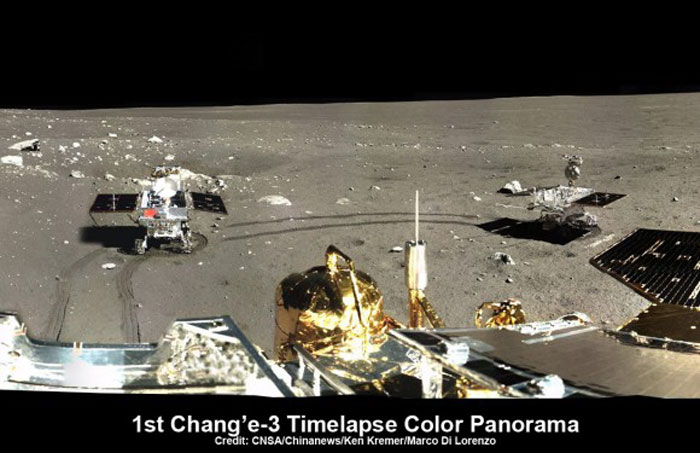

Here’s the original 360 degree panorama:
.

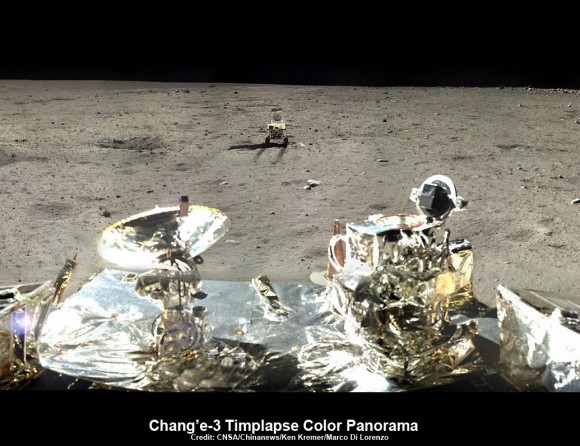

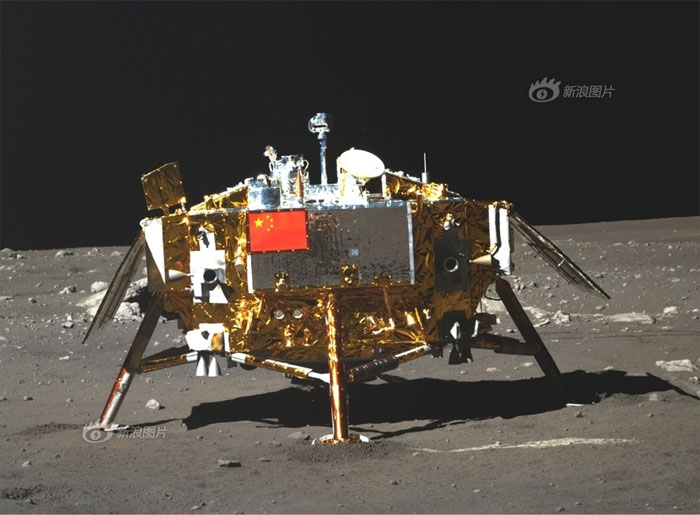
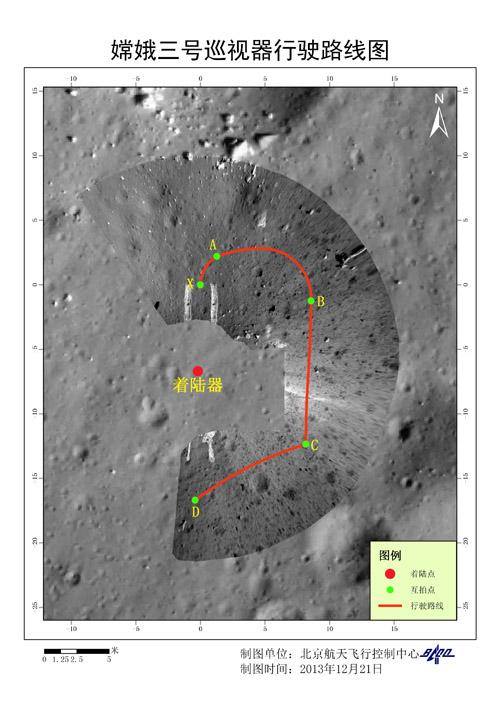
China's moon rover monitored with abnormity
BEIJING, China's moon rover "Yutu" (Jade Rabbit) has had an abnormity, and scientists are organizing an overhaul, the State Administration of Science, Technology and Industry for National Defence said on Saturday.
Quelle: Xinhua
- Update
.
China Exclusive: China's moon rover experiences abnormality
BEIJING, China's moon rover, Yutu (Jade Rabbit), has experienced a mechanical control abnormality, and scientists are organizing repairs.
The abnormality occurred due to "complicated lunar surface environment," the State Administration of Science, Technology and Industry for National Defence (SASTIND) said on Saturday, without giving further details.
The abnormality emerged before the rover entered its second dormancy at dawn on Saturday as the lunar night fell, according to SASTIND.
The lander, another part of the Chang'e-3 probe, also "fell asleep" earlier on Friday.
The pair went dormant for two weeks about one month ago when the first lunar night of the mission occurred.
One night on the Moon is about 14 days on Earth, during which the temperature falls below minus 180 Celsius. During the lunar night, there is no sunlight to provide power to Yutu's solar panel.
After the first dormancy, the lander's Moon-based optical telescope carried out observation of the sky, while its extreme ultraviolet camera observed the plasmasphere over the Earth, according to SASTIND.
An Ultra High Frequency communication test between the lander and the moon rover was also conducted.
The rover obtained scientific data through its radar, panorama camera, a particle X-ray device and infrared imaging equipment, said SASTIND.
The Chang'e-3 lunar probe soft-landed on the Moon on Dec. 14. Yutu separated from the lander hours later.
The success of the Chang'e-3 mission makes China the third country to soft-land a spacecraft on lunar soil after the United States and the former Soviet Union.
Humans have conducted a total of 130 lunar probe activities with a success rate of only about 51 percent, Wu Weiren, chief designer of China's lunar probe program, said in an earlier interview with Xinhua.
China's lunar probe missions -- Chang'e-1, 2, and 3 -- have all succeeded, according to Wu.
Lunar probe mission failure is not rare. In April 1962, the U.S. lunar probe Ranger 4 crashed into the dark side of the Moon after equipment failure prevented it from returning pictures and scientific data.
Japan launched a lunar probe in 1990, which soon moved off course. It failed to transmit any data and crashed into the Moon in 1993.
India managed to send a lunar probe into space in 2008, but an equipment in the main craft malfunctioned several months later, leading to the loss of contact with the unmanned spacecraft.
Quelle: Xinhua
.
Update: 26.01.2014
.
Netizens extend blessings to troubled lunar rover
BEIJING, Tens of thousands of Chinese netizens have sent their blessings to lunar rover Yutu (Jade Rabbit) after it experienced major trouble.
A mechanical control abnormality occurred to Yutu because of the "complicated lunar surface environment," said China's State Administration of Science, Technology and Industry for National Defence (SASTIND) on Saturday. Repair work is ongoing.
The news caused a splash on China's social networking circles.
People not only hailed the authority's openness to the accident, but also expressed concern.
By Sunday afternoon, more than 36,000 reposts had been generated under the "yueqiucheyutu" or "lunar rover yutu" account on Sina Weibo, China's Twitter.
The weibo account is believed to belong to space enthusiasts who have been following Yutu's journey to the moon. It has more than 110,000 followers.
Many netizens fear for the troubled rover's destiny.
"You have done a great job Yutu. You have endured extreme hot and cold temperatures and shown us what we have never seen. Hope you get well soon, but no matter what, it is your presence that makes the planet about 390 thousand kilometers away dazzling," wrote "Amaniandlove".
Zhang Yian, a Beijing-based writer, said Yutu has shouldered more than just the hope of China's space industry but also the dreams of the Chinese people. "This is too heavy a burden. If the rabbit can not stand again, maybe we should let it have a rest."
"Tanwie" wrote on weibo, "Space exploration, the more gorgeous a view you see, the more dangerous it can be."
The problem happened just before Yutu was about to begin its second dormancy in the lunar night. One night on the moon is about 14 days on Earth. During this time, the temperature falls below minus 180 Celsius.
The rover has obtained scientific data through its radar, panorama camera, a particle X-ray device and infrared imaging equipment, according to the SASTIND.
The rover was expected to stay on the moon for at least three months after it separated from the Chang'e-3 probe which soft-landed on the moon on Dec. 14.
Saturday also marked the 10th anniversary of rover Opportunity's landing on Mars. A weibo account called "NASAzhongwen" or "Chinese NASA," posted a message on Sina Weibo, wishing Yutu to get well soon.
The account has no official connection with the National Aeronautics and Space Administration, but it has documented space activities as well as the journey of Mars rovers Opportunity and Curiosity.
Compared with Opportunity's 10 years on Mars, Yutu's one-month stay is not long. But the occurrence of such an abnormality is normal, said Yang Yuguang, a researcher from China Aerospace Science & Industry Corp., deeming the Chang'e 3 probe mission as one of the most difficult in the country's space exploration.
Human kind has only achieved a 51 percent success rate on lunar probe missions among the 130 in total, according to China's lunar probe program chief designer Wu Weiren, in an earlier interview with Xinhua.
"There is no smooth way ahead. Whether or not we can overcome this difficult situation, it's a big lesson for our lunar exploration research," said Yang.
On Sunday afternoon, messages continued to be posted on Sina Weibo. "Come on little rabbit, you must hang on in there to see the Spring Festival fireworks," wrote "Dourentao".
Quelle: Xinhua
.
Update: 12.02.2014
.
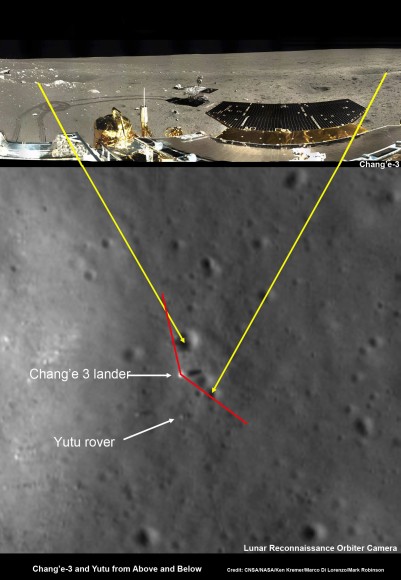
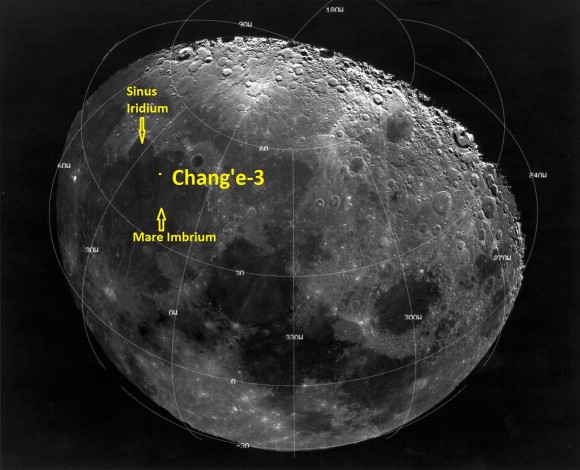
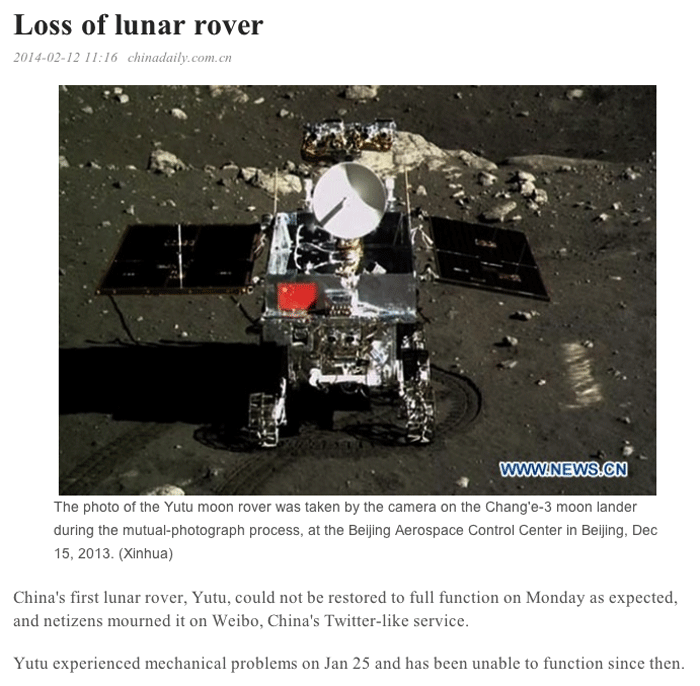
.
Has China's Ailing Moon Rover Survived 2nd Lunar Night?
Quelle:spacecom
.
Yutu’s fans hope as lunar rover shows signs of awakening after malfunction
.
.
Update: 13.02.2014
.
Jade Rabbit back from the dead: Scientists restore communications with Moon rover - but they're still trying to fix its mechanical faults
- Rover's process for shutting down for the lunar night has malfunctioned
- A lunar night lasts two weeks and temperatures can drop to minus 180 °C
- Lunar dust may have blocked one of the solar panels from folding inward, leaving equipment exposed to the dangerously low temperatures
- Scientists won't know if probe will work until after the two-week period
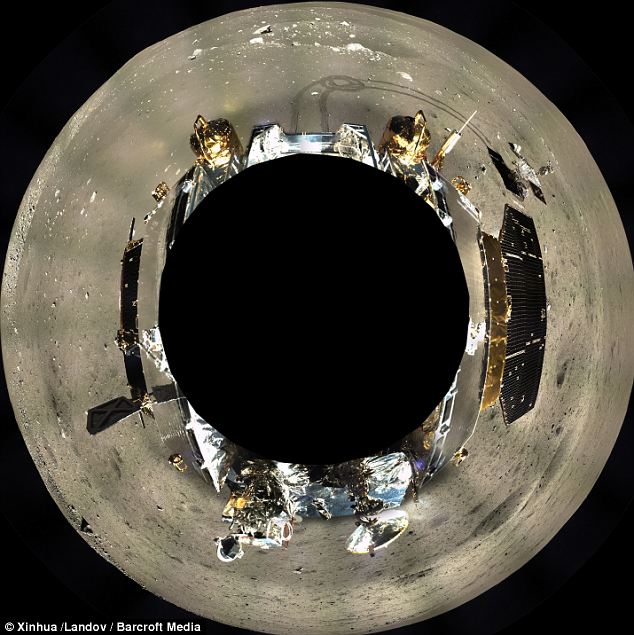
-
China has restored communications with its space programme's Jade Rabbit moon rover, but engineers are still working to fix its mechanical problems, state media said.The official Xinhua News Agency cited Pei Zhaoyu, the lunar probe programme's spokesman, as saying the rover had survived the frigid cold of the lunar night that began on 25 Jan.The Jade Rabbit rover is designed to roam the lunar surface for three months while surveying for natural resources and sending back data.The problems were a rare setback for China, which in recent years has conducted space walks and placed a space station in orbit.Yesterday China's Jade Rabbit Moon rover was declared dead on the Moon's surface in a major setback for the country's ambitious space programme.But Pei said the rover had 'come back to life' despite space experts' earlier concerns that it might not survive the extremely low temperatures of the lunar night, when the temperature drops to -180ºC (-292°F).'The rover stands a chance of being saved now that it is still alive,' Pei was quoted as saying. He said it was still unclear what caused the problem.The mission is proving a popular success for China's military-backed space programme.Updates about the rover's progress have been posted on an unofficial Chinese microblog account written with Jade Rabbit's 'voice', attracting tens of thousands of comments by Chinese Internet users.The Jade Rabbit, or Yutu in Chinese, was deployed on the moon on December 15 and was a huge source of pride in China, which is only the third country to complete a lunar rover mission after the United States and the former Soviet Union.The silver rover experienced a 'mechanical control abnormality' late January due to 'the complicated lunar surface environment', according to the official Xinhua news agency, and has been unable to function since then.Condolences poured in on Weibo, China's Twitter-like service, where Internet users mourned the demise of the rover, according to China News Service's report titled 'Loss of lunar rover'.The Jade Rabbit rover had previously sent back its first pictures from the moon and officials lauded the first lunar soft landing in nearly four decades as a step forward for 'mankind as a whole'.'Exploration of outer space is an unremitting pursuit of mankind,' China's space agency, the State Administration of Science, Technology and Industry for National Defence (SASTIND) said after the rover was deployed on the moon.The mission reflects 'the new glory of China to scale the peaks in world science and technology areas,' it said, adding it was committed to exploring and using space 'for peaceful purposes'.The lunar mission, which comes a decade after China first sent an astronaut into space, is seen as a symbol of the country's rising global stature and technological advancement, as well as the Communist Party's success in reversing the fortunes of the once-impoverished nation.Beijing plans to establish a permanent space station by 2020 and eventually send a human to the moon.The potential to extract the moon's resources has been touted as a key reason behind Beijing's space programme, as the moon believed to hold uranium, titanium, and other mineral resources, as well as offering the possibility of solar power generation.The six-wheeled Yutu vehicle began operating last month after making the first soft landing on the moon by a space probe in 37 years.It is designed to roam the lunar surface for three months while surveying for natural resources and sending back data, along with its stationary lander, Chang'e 3.Over 150,000 people follow the rover's progress on its microblog, which posted on Saturday that repairs were underway and that all hope was not lost.‘Sorry to make you all sad. The engineers and I haven't given up yet,’ the post said.News of the rover's troubles were splashed across Chinese newspapers on Monday and even featured at the Foreign Ministry's daily briefing.The problems appeared to be related to the solar-powered probe's process for shutting down for the lunar night, which lasts more than two weeks.The probe had survived its first shutdown, during which it was unable to generate energy from its solar panels and relies on a radioactive power source to keep its delicate sensors and other equipment intact.The rover was traversing a relatively flat part of the moon known as Sinus Iridum, or the Bay of Rainbows, at a speed of 200 yards per hour.The landing vehicle, which has already shut down for the lunar night, is designed to conduct scientific examinations for one year.Online speculation focused on the possibility of lunar dust having blocked one of the solar panels from folding inward, leaving equipment exposed to the dangerously low temperatures..
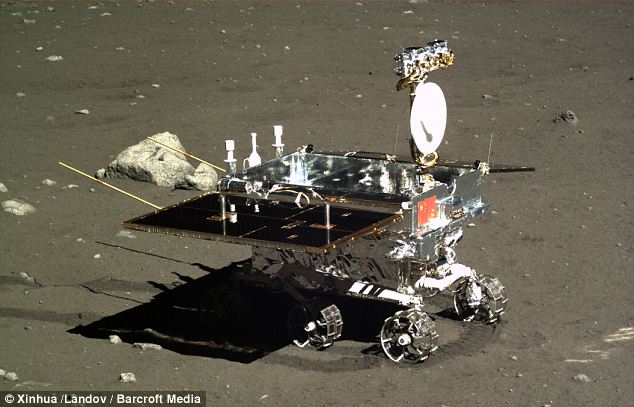 Quelle: Daily MailIt will not be known if the probe is able to function again until after the two-week break.
Quelle: Daily MailIt will not be known if the probe is able to function again until after the two-week break.
.
.
.
Update: 22.02.2014
.
No Call for Yutu
.
Well over a week since daylight returned to its landing site, China's Yutu Moon rover seems to be damaged beyond any practical use. That's the only reliable conclusion this analyst can reach after days of reading the available evidence, considering the options, and waiting for any sort of good news.
It is true that China reported that Yutu had made some sort of transmission a few days after sunrise. This shows that the rover was not completely dead at the time. However, this form of erratic transmissions, followed by silence, is typical of the way spacecraft die.
We have seen it so many times before. Ironically, the sunlight that was expected to heal the rover back to health may have damaged it even further as the lunar day advanced. Parts that could have been damaged by the cold lunar night could have been fractured or warped as they heated.
Is Yutu just severely damaged or is it totally dead? Right now, that's inconclusive. This writer suggested in an earlier article that it would take China some time to diagnose Yutu's faults and work out a strategy to use the rover.
This would take some time, and that would justify China's silence. Well, there has now been more than enough time to make a diagnosis and draw up some plans. China should say something new about Yutu. The world wants to know.
The overall forecast for Yutu grows bleaker with every day of inactivity and silence from Chinese officials. The world understands this, and has generally embraced Yutu and the Chang'e-3 mission that landed it with the support it deserves.
Millions of people around the world feel that they are stakeholders in this mission, just as China wanted. We need closure on the fate of our little robotic friend.
Quelle: SD
.
Update: 23.02.2014
.
China Focus: Uneasy rest begins for China's troubled Yutu rover
.
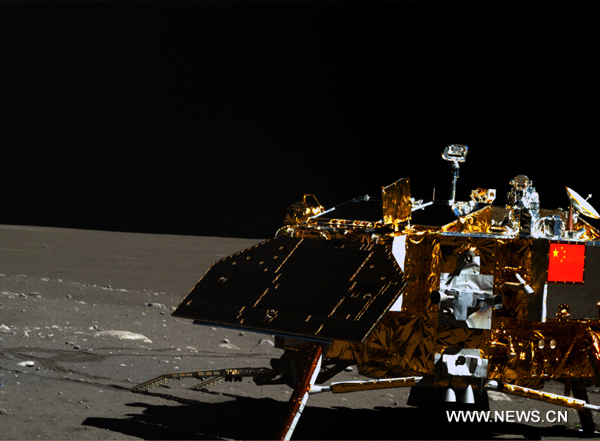
This undated photo taken by the camera on the Yutu moon rover shows the Chang'e-3 moon lander and the moon surface. The Chang'e-3 lander entered its third dormancy on early Feb. 23, 2014. China's lunar rover Yutu also entered the dormancy on Feb. 22, with the mechanical control issues that might cripple the vehicle still unresolved. According to the State Administration of Science, Technology and Industry for National Defence (SASTIND), Yutu only carried out fixed point observations during its third lunar day, equivalent to about two weeks on Earth. Yutu's radar, panorama camera and infrared imaging equipment are functioning normally, the control issues that have troubled the rover since January persist. (Xinhua/SASTIND)
.
China's lunar rover Yutu entered its third planned dormancy on Saturday, with the mechanical control issues that might cripple the vehicle still unresolved.
According to the State Administration of Science, Technology and Industry for National Defence (SASTIND) on Sunday, Yutu only carried out fixed point observations during its third lunar day, equivalent to about two weeks on Earth.
Yutu's radar, panorama camera and infrared imaging equipment are functioning normally, but the control issues that have troubled the rover since January persist.
The rover went to sleep mode on Saturday afternoon.
During the lunar night, there is no sunlight to power Yutu's solar panels. In this period, the rover is expected to stay in a power-off mode and communication with Earth is cut.
Yutu, named after the pet rabbit of the lunar goddess Chang'e in Chinese mythology, touched down on the moon's surface on Dec. 15, some hours after lunar probe Chang'e-3 landed.
The rover was designed to roam the lunar surface for at least three months to survey the moon's geological structure and surface substances and look for natural resources.
But problems emerged before the rover entered its second dormancy on the moon on Jan. 25 as the lunar night fell. According to SASTIND, the mechanic control abnormality occurred due to the "complicated lunar surface"
Experts had feared that it might never function again, but Yutu "woke up" on Feb. 12, two days behind schedule, and caused a stir in China's social networking circles.
A the awakening was announced by an unverified user named "Jade Rabbit Lunar Rover", which posts first-person accounts in the "voice" of the probe, and has gone viral on Weibo.com.
"Hi, anybody there?" it asked, prompting over 60,000 reposts and 40,000 comments within two hours.
Its latest post on Sunday, which featured a picture of the Chang'e-3 probe taken by Yutu during its third lunar day and the caption of "zzZ", implicating the lunar rover had gone asleep, were also reposted by thousands within minutes.
"Remember to wake up on time, you lazy bones," one wrote in reply.
Meanwhile, the Chang'e-3 lunar probe, which carried Yutu to the moon's surface, also entered dormancy in the wee hours of Sunday morning, after carrying out observations of celestial bodies and the Earth's plasmasphere using its optical telescope and extreme ultraviolet camera.
China is the third country to soft-land on the moon after the United States and the Soviet Union.
Chang'e-3 is part of the second phase of China's lunar program, which includes orbiting, landing and returning to Earth. The country has also sent probes to orbit the moon in 2007 and 2010, the first of which crashed onto the lunar surface at the end of its mission.
The second probe was sent to verify key technologies for Chang'e-3 and reconnoitered the landing area, before being sent into deep space.
According to the SASTIND, the Chang'e-2 has become China's first man-made asteroid, and is currently 70 million kilometers from the Earth.
Quelle: Xinhua
.
Update: 1.03.3014
.
China Exclusive: Control circuit malfunction troubles China's Yutu
BEIJING, China's Yutu (Jade Rabbit) moon rover suffered a control circuit malfunction in its driving unit, which troubled its dormancy in extremely low temperature, a scientist said on Saturday.
The control circuit problem prevented Yutu from entering the second dormancy as planned, Ye Peijian, chief scientist of the Chang'e-3 program, told Xinhua in an exclusive interview.
"Normal dormancy needs Yutu to fold its mast and solar panels," said Ye. "The driving unit malfunction prevented Yutu to do those actions."
Ye, a member of the National Committee of the Chinese People's Political Consultative Conference, the country's top political advisory body, added, "This means Yutu had to go through the lunar night in extremely low temperatures."
Yutu, named after the pet rabbit of the lunar goddess Chang'e in Chinese mythology, touched down on the moon's surface on Dec. 15, a few hours after lunar probe Chang'e-3 landed.
The rover was designed to roam the lunar surface for at least three months to survey the moon's geological structure and surface substances and look for natural resources.
But problems emerged before the rover entered its second dormancy on the moon on Jan. 25 as the lunar night fell. Experts had feared that it might never function again, but it "woke up" on Feb. 12, two days behind schedule.
At present every piece of equipment of Yutu, which is undergoing another dormancy, is getting back to normal, the state of the rover is not encouraging, Ye said.
"We all wish it would be able to wake up again," said Ye ahead of the annual session of the top advisory body, which is scheduled to open on Monday.
Quelle: Xinhua
.
Update: 8.03.2014
.
NASA Lunar Orbiter snaps Spectacular Images of Yutu Moon Rover driving around Chang’e-3 Lander
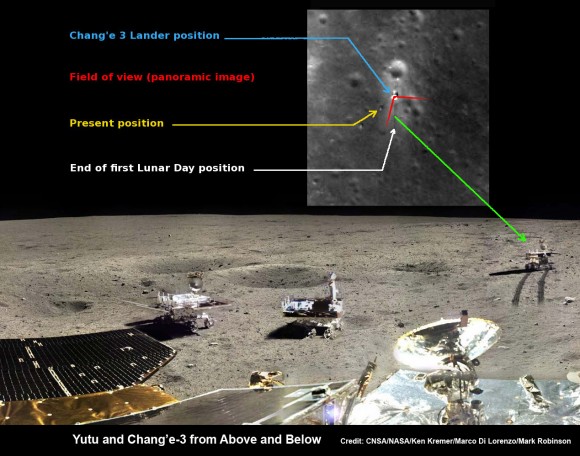
Yutu rover drives around Chang’e-3 lander – from Above And Below
Composite view shows China’s Yutu rover and tracks driving in clockwise direction around Chang’e-3 lander from Above And Below (orbit and surface). The Chang’e-3 timelapse lander color panorama (bottom) and orbital view (top) from NASA’s LRO orbiter shows Yutu rover after it drove down the ramp to the moon’s surface and began driving around the landers right side, passing by craters and heading south on Lunar Day 1. It then moved northwest during Lunar Day 2. Arrows show Yutu’s positions over time.
Credit: CNSA/NASA/Ken Kremer/Marco Di Lorenzo/Mark Robinson
.
The powerful telescopic camera aboard NASA’s Lunar Reconnaissance Orbiter (LRO) has captured spectacular new images detailing the traverse of China’s Yutu moon rover around the landing site during its first two months exploring the Moon’s pockmarked grey terrain.
The newly released high resolution LRO images even show Yutu’s tracks cutting into the lunar surface as the world famous Chinese robot drove in a clockwise direction around the Chang’e-3 lander that delivered it to the ground in mid-December 2013.
You can precisely follow Yutu’s movements over time – from ‘above and below’ – in our new composite view (shown above) combining the latest LRO image with our timelapse mosaic showing the rover’s history making path from the touchdown point last December to today’s location.
Yutu is China’s first ever Moon rover and successfully accomplished a soft landing on the Moon on Dec. 14, 2013, piggybacked atop the Chang’e-3 mothership lander.
Barely seven hours after touchdown, the six wheeled moon buggy drove down a pair of ramps onto the desolate gray plains of the lunar surface at Mare Imbrium (Sea of Rains) covered by volcanic material.
.
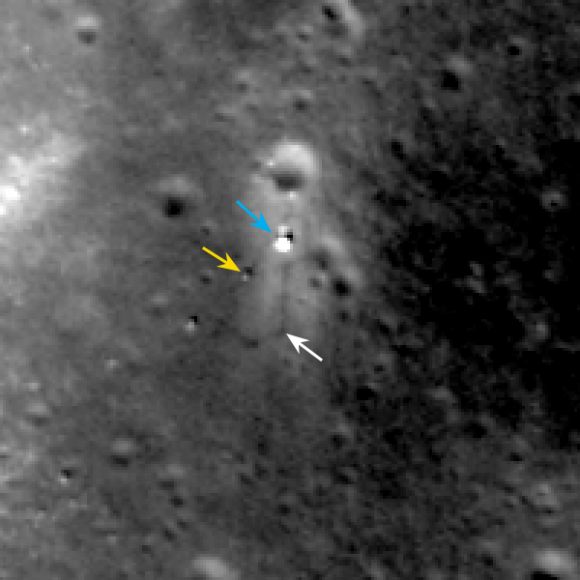
LROC February 2014 image of Chang’e 3 site. Blue arrow indicates Chang’e 3 lander; yellow arrow points to Yutu (rover); and white arrow marks the December location of Yutu. Yutu’s tracks can be followed clockwise around the lander to its current location. Image width 200 meters (about 656 feet). Credit: NASA/Goddard/Arizona State University
.
Altogether three images of the rover and lander have been taken to date by the Lunar Reconnaissance Orbiter Camera (LROC) aboard LRO – specifically the hi res narrow angle camera (NAC).
The LROC NAC images were captured on Dec. 25, 2013, Jan. 21, 2014 and Feb. 17, 2014 as LRO soared overhead.
The four image LRO composite below includes a pre-landing image taken on June 30, 2013.
.
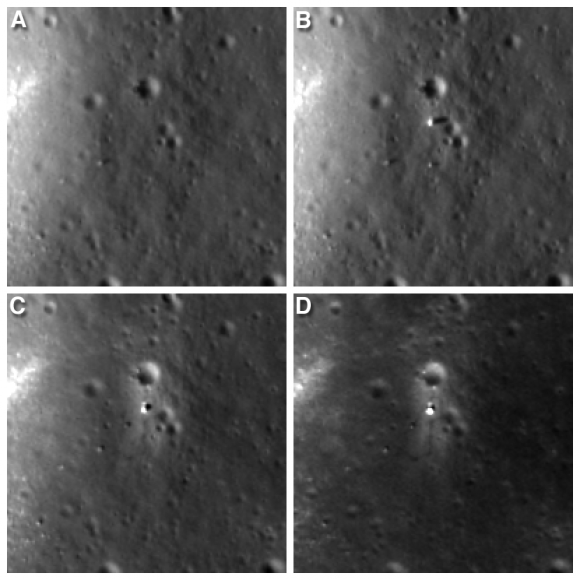
Four LROC NAC views of the Chang’e 3 landing site. A) before landing, June 30, 2013 B) after landing, Dec. 25, 2013 C) Jan. 21, 2014 D) Feb. 17, 2014 Width of each image is 200 meters (about 656 feet). Follow Yutu’s path clockwise around the lander in “D.” Credit: NASA/Goddard/Arizona State University
.
Since the solar incidence angles were different, the local topography and reflectance changes between images showing different levels of details.
“In the case of the Chang’e 3 site, with the sun higher in the sky one can now see the rover Yutu’s tracks (in the February image),” wrote Mark Robinson, Principal Investigator for the LROC camera in an LRO update.
The solar powered rover and lander can only operate during periods of lunar daylight, which last 14 days each.
During each lunar night, they both must power down and enter hibernate mode since there is no sunlight available to generate power and no communications are possible with Earth.
Here is a gif animation from the NASA LRO team combining all four LROC images.
.
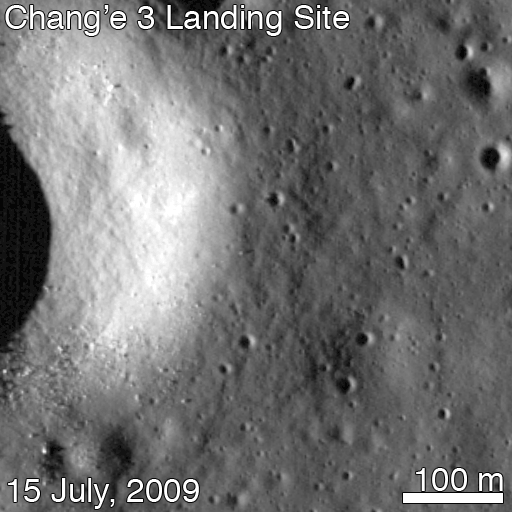
Four views of the Chang’e 3 landing site from before the landing until Feb. 2014. Credit: NASA/GSFC/Arizona State University
.
During Lunar Day 1, Yutu drove down the landers ramps and moved around the right side in a clockwise direction.
By the end of the first lunar day, Yutu had driven to a position about 30 meters (100 feet) south of the Chang’e-3 lander, based on the imagery.
After awakening for Lunar Day 2, Yutu then moved northwest and parked about 17 meters (56 feet) southwest of the lander, according to Robinson.
By comparing the Janaury and February images “it is apparent that Yutu did not move appreciably from the January location,” said Robinson.
At this moment Yutu and the companion Chang’e-3 lander are sleeping through their 3rd Lunar Night.
They entered hibernation mode on Feb. 22 and Feb. 23, 2014 respectively.
Hopefully both probes will awaken from their slumber sometime in the next week when the Moon again basks in daylight glow to begin a 4th day of lunar surface science operations.
“We all wish it would be able to wake up again,” said Ye Peijian, chief scientist of the Chang’e-3 program, according to CCTV, Chin

